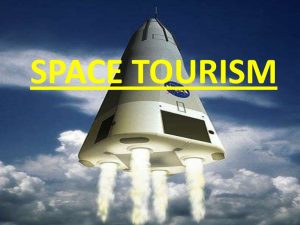What is Space Tourism?
Space tourism is human space travel for recreational purposes. There are several different types of space tourism, including orbital, suborbital and lunar space tourism. To date, orbital space tourism has been performed only by the Russian Space Agency. Work also continues towards developing suborbital space tourism vehicles. This is being done by aerospace companies like Blue Origin and Virgin Galactic. In addition, SpaceX (an aerospace manufacturer) announced in 2018 that they are planning on sending space tourists, including Yusaku Maezawa, on a free-return trajectory around the Moon on the Starship.
 There are several options for space tourists. For example, Crouch et al. (2009) investigate the choice behaviour between four types of space tourism: high altitude jet fighter flights, atmospheric zero-gravity flights, short-duration suborbital flights, and longer duration orbital trips into space. Reddy et al. (2012) find the following motivational factors behind space tourism (in order of importance): vision of earth from space, weightlessness, high speed experience, unusual experience, and scientific contribution.
There are several options for space tourists. For example, Crouch et al. (2009) investigate the choice behaviour between four types of space tourism: high altitude jet fighter flights, atmospheric zero-gravity flights, short-duration suborbital flights, and longer duration orbital trips into space. Reddy et al. (2012) find the following motivational factors behind space tourism (in order of importance): vision of earth from space, weightlessness, high speed experience, unusual experience, and scientific contribution.
During the period from 2001 to 2009, 7 space tourists made 8 space flights aboard a Russian Soyuz spacecraft brokered by Space Adventures to the International Space Station. The publicized price was in the range of US$20–25 million per trip. Some space tourists have signed contracts with third parties to conduct certain research activities while in orbit. By 2007, space tourism was thought to be one of the earliest markets that would emerge for commercial spaceflight. Space Adventures is the only company that has sent paying passengers to space. In conjunction with the Federal Space Agency of the Russian Federation and Rocket and Space Corporation Energia, Space Adventures facilitated the flights for all of the world’s first private space explorers. The first three participants paid in excess of $20 million (USD) each for their 10-day visit to the ISS.
Russia halted orbital space tourism in 2010 due to the increase in the International Space Station crew size, using the seats for expedition crews that would previously have been sold to paying spaceflight participants. Orbital tourist flights were set to resume in 2015 but the one planned was postponed indefinitely and none have occurred since 2009.
On June 7, 2019, NASA announced that starting in 2020, the organization aims to start allowing private astronauts to go on the International Space Station, with the use of SpaceX’s Crew Dragon spacecraft and Boeing’s Starliner spacecraft for public astronauts, which is planned to be priced at 35,000 USD per day for one astronaut (not including the cost to get there).
Read more at https://en.wikipedia.org/wiki/Space_tourism
